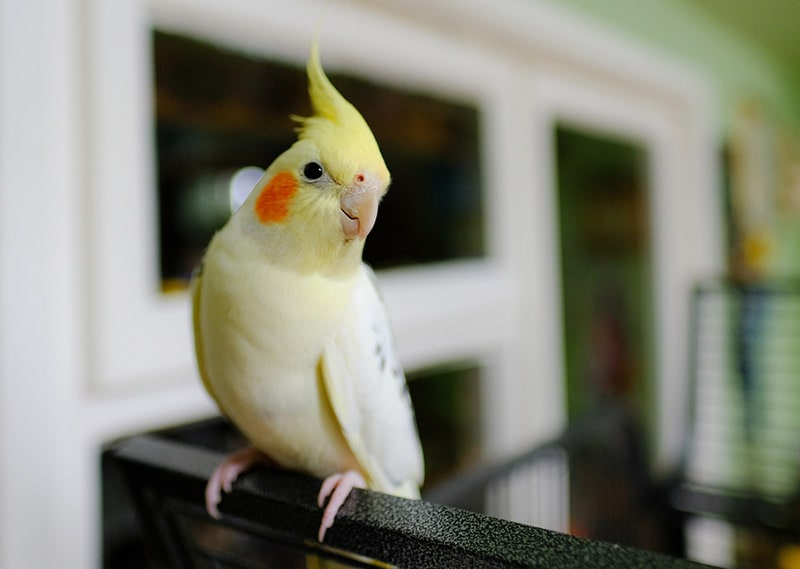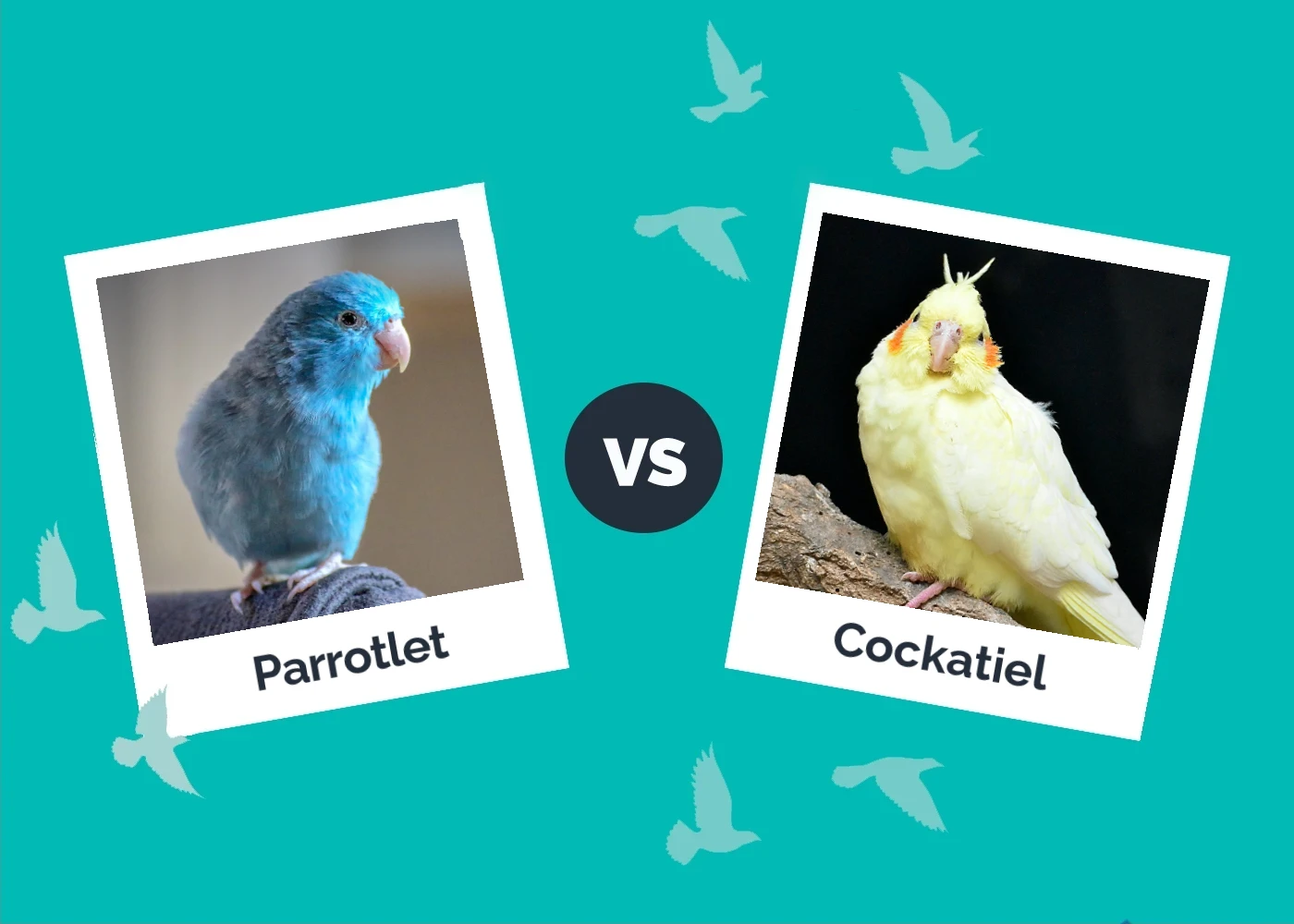Best Places to Pet a Cockatiel: 6 Ideal Spots & Where You Should Avoid (With Infographic)
Updated on
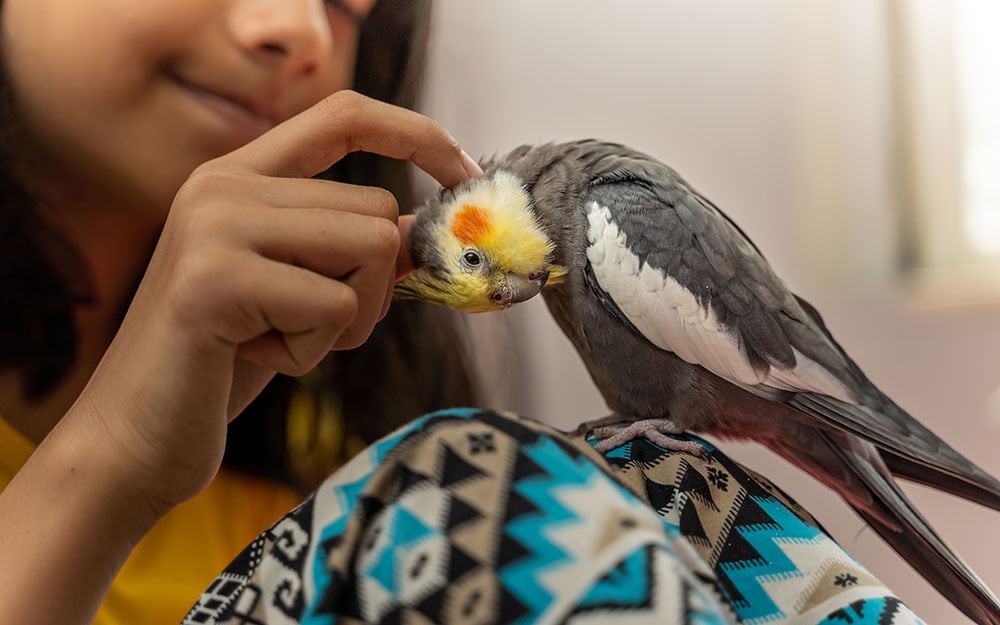
Click to Skip Ahead
If you’ve ever owned a cockatiel, you know why the attractive birds have been America’s favorite for several years running. Cockatiels are cheery and gentle, and once acclimated to their owner, can often be safely held by adults and children.
If you’re interested in adopting a cockatiel, you can examine the six ideal spots to pet a cockatiel so that, when you handle yours, the experience will be positive and beneficial for both of you. Read on to learn more and how to pet your cockatiel like a seasoned professional!
It’s All in the Approach
Cockatiels are small creatures that startle easily. That’s the last thing you want when trying to pet your cockatiel, which is why you need to approach them correctly when you want to engage with them. To do that, always approach your cockatiel from the front and either at eye level or below. If you come in from the side or above, they won’t see you immediately and might get scared.
Also, remember that while many cockatiels love being petted, some don’t, so be aware and don’t force your pet to do something it doesn’t enjoy. Lastly, if you forget where to pet a cockatiel, remember that it’s anywhere they can’t preen themselves. If they can preen it, don’t pet it, especially their wings, belly, and tail.
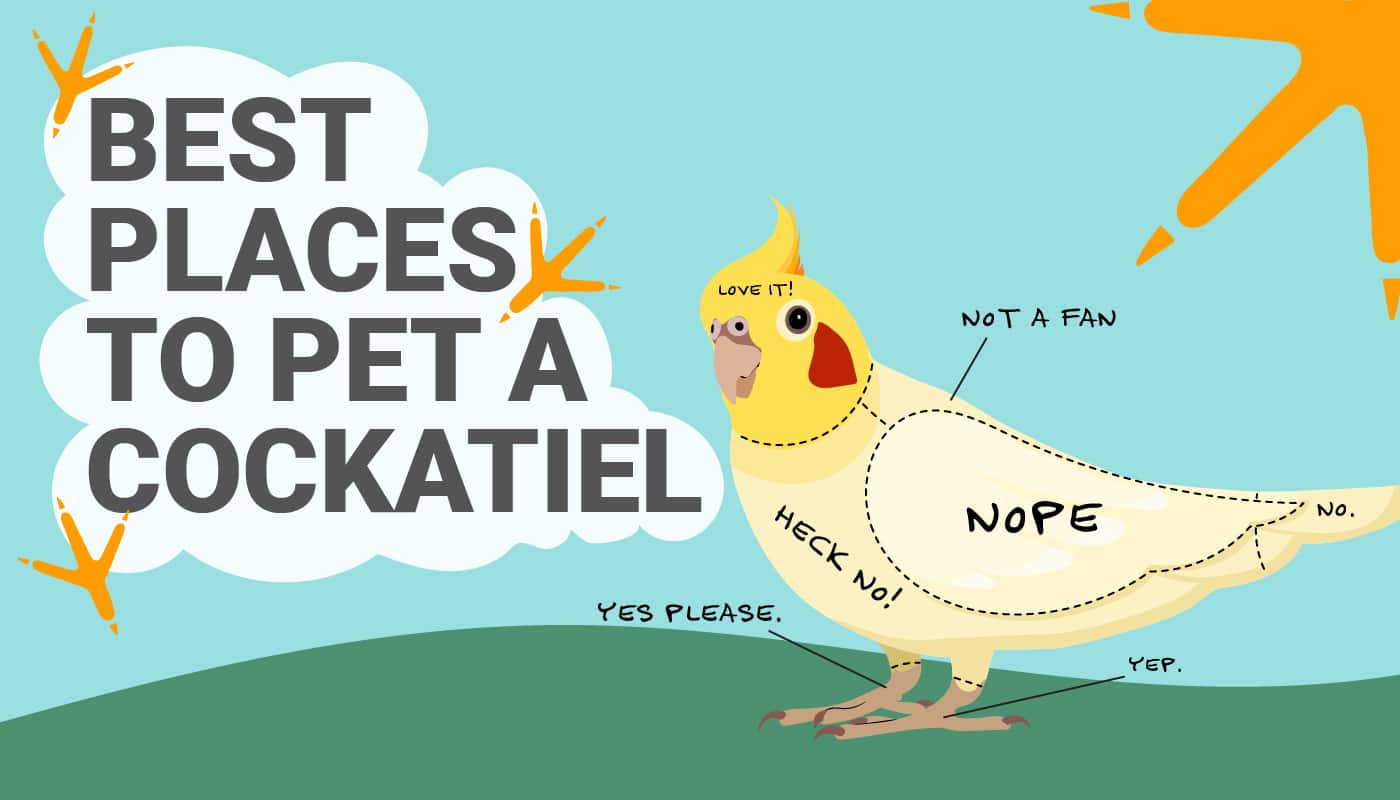
The 6 Ideal Spots to Pet a Cockatiel
1. Under Your Cockatiel’s Beak and Nares (Nostrils)
Cockatiels love being petted on the underside of their beaks, one place they can’t touch or scratch at all. To pet your cockatiel’s beak, slowly approach it from the front and bring your finger up under its beak. When you pet its beak, be sure it’s in the opposite direction that the feathers lie. Also, do your best not to touch the feathers while petting your cockatiel.
2. On Top of Your Cockatiel’s Head
Few cockatiels don’t enjoy being petted on the tops of their heads. Many cockatiels will show that they enjoy it when you pet them on their head by lowering them so you can get better access and a better angle. If they do, you can feel good about your relationship with your feathered friend because your cockatiel trusts you implicitly.
3. At the Nape of Your Cockatiel’s Neck
This area is right under your cockatiel’s beak and extends down about 1 to 2 inches. Be sure to rub their feathers in the opposite direction when you pet them here as, unlike dogs and cats, birds like it when you pet them “against the grain.” If your bird buddy likes this, it will lift its head even further up to give you better access and often close its eyes.
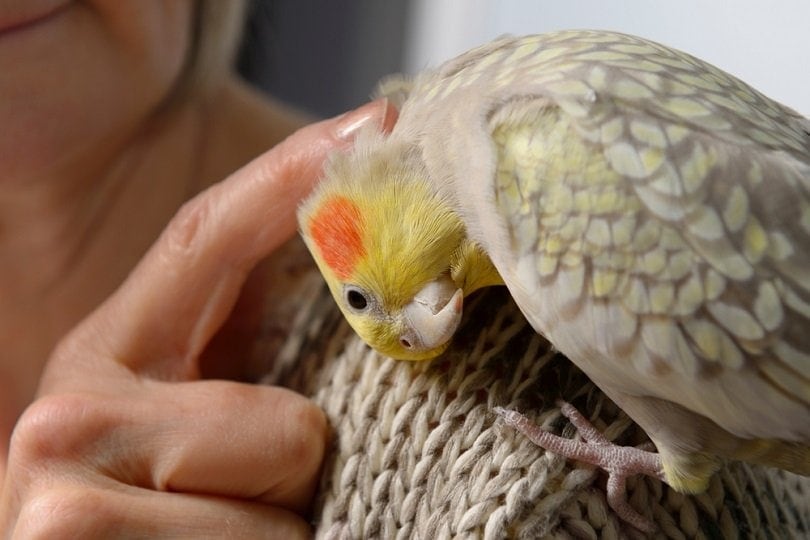
4. On Your Cockatiel’s Cheeks
There’s no way for a cockatiel to preen its cheeks, which is why petting them there is very enjoyable. Remember that, while petting your cockatiel on the cheeks, be careful not to touch or scratch its eyes. And, of course, be as gentle as possible.
5. On Your Cockatiel’s Feet
Although it might be startling to them initially, many cockatiels love being pet on their feet. In fact, most cockatiels love getting a light massage on their feet and will learn to ask you for a foot massage by presenting their feet to you. Be very gentle when massaging your cockatiel’s feet, and if they don’t seem to like it, stop right away.
6. On the Back of Your Cockatiel’s Neck
When petting the back of your cockatiel’s neck, you should always start from the top of its head. Then, using either one or two fingers, drag them slowly and gently down. Try to keep your movements as soft and calm as possible. If your pet shows any signs of stress or resistance, stop and try again later.
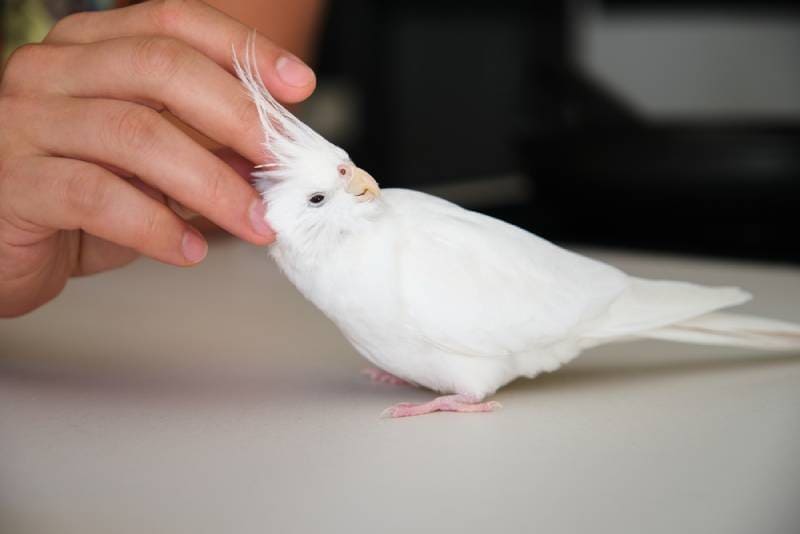
How to Tell if a Cockatiel Doesn’t Want to Be Petted
Some cockatiels don’t like being petted. Even those that do, however, might not want to be petted all the time. That’s why you should never try to pet a cockatiel that doesn’t want to be petted. This will annoy them, cause anger and fear, and get in the way of bonding with your pet. If your cockatiel, for example, tries to bite you, remove your hand and try again when they’re calm. Below are a few other reactions a cockatiel might have if they don’t want you to pet them, including:
- Hissing through their nose at you or your hand
- Stepping quickly away from your hand when you try to pet them
- They turn their back towards you and walk away
- They nip at you, as mentioned above
Is It Worth Getting a Hand-Fed Cockatiel?
Many pet owners who have never owned a cockatiel wonder if getting one that’s been hand-fed is a good idea. It is a good idea, but a hand-fed cockatiel will generally cost more than one that hasn’t been fed by hand. However, a hand-fed cockatiel will be far more likely to accept and enjoy petting if you can afford the extra cost.
It’s important, however, to remember that even a hand-fed cockatiel might not like being petted. Some are too scared and will always be too scared, while some cockatiels just don’t have the affectionate personality needed. That’s why it’s recommended to wait until a cockatiel is slightly older before you adopt it so that you can tell if it likes petting or not.
How to Pet a Cockatiel
You need to realize when petting a cockatiel that they aren’t used to being touched by any animal except for another cockatiel, and then only on their heads. That’s one of the unwritten rules of cockatiel life; if one cockatiel touches another on any other body part, it’s considered a move to mate. If you do this, your pet might become sexually aroused, which can lead to unwanted aggressive behavior when unfulfilled.
As mentioned earlier, you should always pet your cockatiel against the grain of its feathers. That helps unfold new feathers and keeps its body clean. Also, when your cockatiel is molting, preening against the grain helps relieve any itchiness it might have, and petting against the grain can also help.
Final Feathers
Cockatiels, like most birds, don’t always like to be petted. However, many do, and if you know how to pet them, it can be a rewarding, relaxing, and positive experience for both of you. It’s best to approach your cockatiel from the front when you want to pet it and look for signs of distress. If the bird seems irritated, stop petting and try again later.
If you’re lucky, you’ll get one of the millions of affectionate cockatiels that love being petted and will look for more. After adopting your new cockatiel, go slowly, speak softly, and, in time, petting might be something your feathered friend truly enjoys.
See also:
Featured Image Credit: binoyphotofolio, Shutterstock


